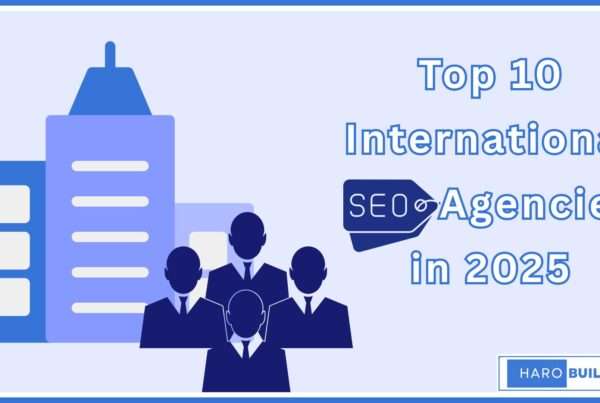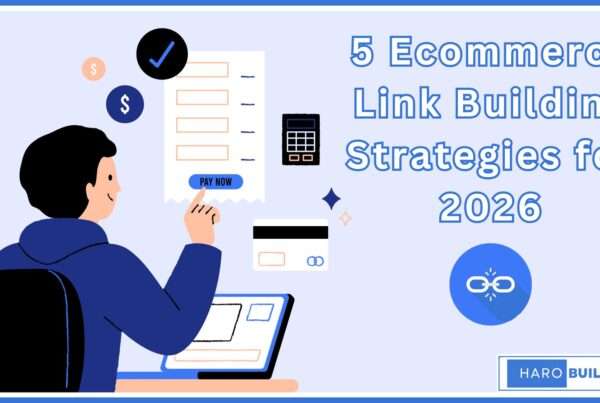
Introduction
The year 2025 has become a proving ground for business leaders navigating rapid transformation, technological acceleration, and customer expectations that shift by the minute. Unlike previous decades where growth was often driven by traditional metrics and aggressive scaling, today’s most effective leaders are those who embrace disruption, prioritize authenticity, and lead with strategic foresight. These leaders aren’t simply adapting to the future—they are engineering it.
What distinguishes these bold business minds is not just their appetite for innovation but their operational courage to pivot, trim fat, and pursue real connections in a digital-first world. Whether leveraging AI to streamline processes or doubling down on human-driven brand narratives, the Disruption Syndicate of 2025 proves that sustained growth comes from daring choices, not safe bets.
Rising Above the Noise with Authentic Brand Communication
Modern audiences are overwhelmed by digital clutter, and the brands that cut through the chaos are those that lead with honesty, humanity, and value-driven storytelling. In 2025, authentic interactions are the killer application. Business leaders have realized that audiences crave depth, not just automation, and this is transforming how companies communicate across channels.
As Paige Arnof-Fenn, Founder & CEO of Mavens & Moguls puts it:
“Who would have thought that the killer application in 2025 would be authentic interactions, not Artificial Intelligence?”
This insight speaks to the larger trend in branding—where personalized, thoughtful content outperforms polished, AI-generated blather. Companies are now investing in thought leadership, original storytelling, and consistent human connection. Whether through webinars, podcasts, or active LinkedIn profiles, the strategy is clear: showcase real experiences, share vulnerabilities, and create trust in a world skeptical of automation.
Authenticity Is a Key SEO Driver in 2025:
The search landscape has evolved, with Google emphasizing E-E-A-T (Experience, Expertise, Authority, and Trust). As AI-generated content floods the web, first-hand experience becomes the currency of credibility.
- Tell your origin story.
- Share both successes and failures.
- Prioritize human tone over robotic perfection.
As Paige highlights: “The prevalence of AI-generated content and users’ search for authenticity have made those qualities critical for anyone trying to rank content now.”
Scaling Smarter Not Bigger with Intelligent Automation
The leaders shaping 2025 understand that growth doesn’t mean doing more—it means doing things better. Businesses are increasingly moving away from linear scaling models and toward intelligent automation that drives exponential efficiency.
According to Eric Turney, President of The Monterey Company:
“Our biggest growth driver has been embracing automation and AI… By automating personalized emails and utilizing AI tools like ChatGPT with platforms like Zapier, we’ve reduced manual work while improving the customer experience.”
This reflects a deep shift in operational strategy. Growth is no longer tied to headcount—it’s about maximizing output per resource through intelligent tools. Whether it’s in sales follow-up, customer service, or marketing automation, companies that adopt lean, automated workflows can outpace even their larger competitors.
Tools that Lead the Automation Charge in 2025:
Here are some of the most effective tools powering smart automation this year:
- Zapier – for connecting multiple platforms into seamless workflows.
- ChatGPT & Claude – to generate email responses, content drafts, and support scripts.
- CRM automation systems – for tracking sales touchpoints and lead progression without manual updates.
- Personalization engines – for sending tailored offers and reminders at scale.
The takeaway? Real growth comes from doing more with less—strategically.
Navigating Uncertainty by Lowering the Barrier to Entry
In a climate of economic unpredictability, the boldest leaders aren’t waiting for stability—they’re building resilience through flexibility. Many have abandoned legacy pricing models, replacing them with nimble frameworks that focus on value delivery and short-term results.
As Rocky Pedden, CEO of RevenueZen notes:
“We are doing more shorter term sprint projects as opposed to annual contracts… and building more AI systems to support our team while trying to bring our pricing down.”
These leaders understand that customer confidence is fragile, and commitment-phobia is real. By offering modular service packages, GEO/SEO-based optimization, and high-value deliverables, they reduce friction for new clients and open doors to long-term partnerships.
Growth Agencies Are Reinventing Themselves:
The smartest agencies of 2025 are not standing still. Instead, they’re:
- Shifting from long-term retainers to flexible sprint packages
- Integrating AI into content workflows to speed up production and testing
- Specializing in high-intent channels like GEO-targeted ads and intent-rich SEO
In this new model, efficiency and agility beat rigidity and scale.
Pivoting with Purpose by Targeting New Market Segments
Great leaders recognize when old markets can no longer fuel growth—and they make the tough call to pivot. Whether due to funding slowdowns, audience fatigue, or shifting buyer behavior, 2025’s strongest companies have leaned into strategic realignment.
Cache Merrill, founder of Zibtek, shares:
“We hit a wall—our core startup clients started drying up… That meant rebuilding our sales process from the ground up.”
Zibtek’s pivot toward mid-market and enterprise clients required more than a rebrand. It involved reimagining every stage of their customer lifecycle—from lead gen and sales operations to delivery models and team structure. That kind of shift demands leadership maturity, operational discipline, and a willingness to let go of what’s no longer working.
From Founder-Led Sales to Scalable Systems:
One major shift for Zibtek and other growing companies is moving from founder-led everything to structured, process-led growth:
- Hiring experienced account executives
- Building predictable CRM pipelines
- Focusing on Client Lifetime Value (CLTV) over acquisition volume
- Saying no to poor-fit projects and distractions
Real growth, as Cache puts it, came not from expansion, but subtraction—by doing fewer things better.
Scaling with Design-First Thinking and User-Centric Innovation
In 2025, the most forward-thinking companies are scaling not just through product expansion but by prioritizing design, usability, and differentiated customer experiences. Brands are realizing that standing out in saturated markets requires more than competitive pricing—it demands strategic creativity and operational precision.
As John Beaver, Founder of Desky, puts it:
“We had to make changes to our strategy to differ from our competitors… Designing furniture with different desk size and color options separated us from other outlets.”
Desky’s success came from more than great products—it came from creating an experience that customers genuinely preferred. Their expansion into North America leveraged not only ergonomic design but also a frictionless e-commerce journey that set them apart.
“Choosing the right people in digital and design played a major role in our achievement,” Beaver adds. The takeaway? True growth comes from designing systems, experiences, and teams that scale smart, without compromising what made the brand valuable in the first place.
Community-Driven Brands Are Becoming Market Leaders
In 2025, one of the boldest strategies for growth is rooted in community building. Brands that treat their audience as collaborators—not just consumers—are winning the long game. These companies have created ecosystems of trust, where user feedback influences products, where content is co-created with audiences, and where loyalty is built through shared values and visibility.
The modern buyer expects more than just transactions—they want connection, transparency, and shared mission. Communities built around a brand’s purpose lead to organic evangelism, higher lifetime value, and more authentic engagement. Business leaders who prioritize community growth alongside revenue growth are discovering that their strongest advocates come not from ad spend, but from invested relationships.
B2B Brands Are Taking Lessons from Consumer Culture
The traditional distinction between B2B and B2C branding is blurring. In 2025, leading B2B companies are adopting strategies historically reserved for consumer-focused businesses: emotional storytelling, purpose-driven messaging, and experience-first design. The result? B2B brands that feel human, accessible, and trustworthy—qualities once overlooked in corporate communication.
Modern decision-makers—especially younger professionals—are driven by experience, not just efficiency. They respond to brands that speak to values, purpose, and culture just as much as technical capabilities. The boldest B2B leaders are infusing their messages with emotion and identity, understanding that even in high-stakes enterprise environments, people want to do business with people who get them.
Sustainability and Social Impact Are Now Growth Accelerators
Sustainability has evolved from a CSR checkbox to a central engine of business growth. In 2025, the companies that lead are those embedding environmental and social responsibility directly into their business model. Whether it’s reducing carbon footprints, investing in ethical supply chains, or launching initiatives aligned with the UN’s Sustainable Development Goals, purpose-led strategies are driving not only public favor but also profitability.
Customers and investors alike are rewarding companies with a clear mission and measurable impact. Employees, too, are choosing to work for organizations aligned with their values. This shift has forced leadership teams to rethink everything—from sourcing and product design to hiring and marketing. For bold leaders in 2025, impact is no longer a differentiator—it’s an expectation.
Conclusion:
The bold business leaders of 2025 are writing a new playbook—one that rewards clarity, authenticity, and operational courage. They aren’t chasing vanity metrics, nor are they lost in AI hype. They are carving growth paths that are lean, human-centric, and purpose-driven.
From Paige Arnof-Fenn’s call for authentic, experience-based storytelling, to Eric Turney’s use of AI-powered automation, to Cache Merrill’s lesson in pivoting and subtracting to scale—these leaders are proof that there’s no one-size-fits-all in modern growth. There is, however, one consistent theme: the willingness to challenge old assumptions and lead with clarity, not clutter.
If you’re looking to drive real growth in 2025, don’t just follow the trends. Join the disruption.



